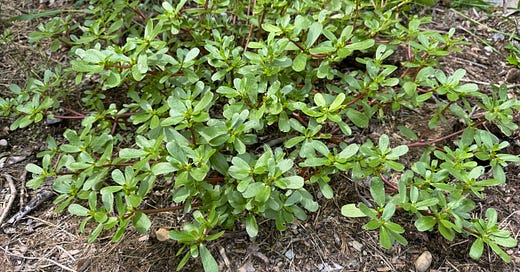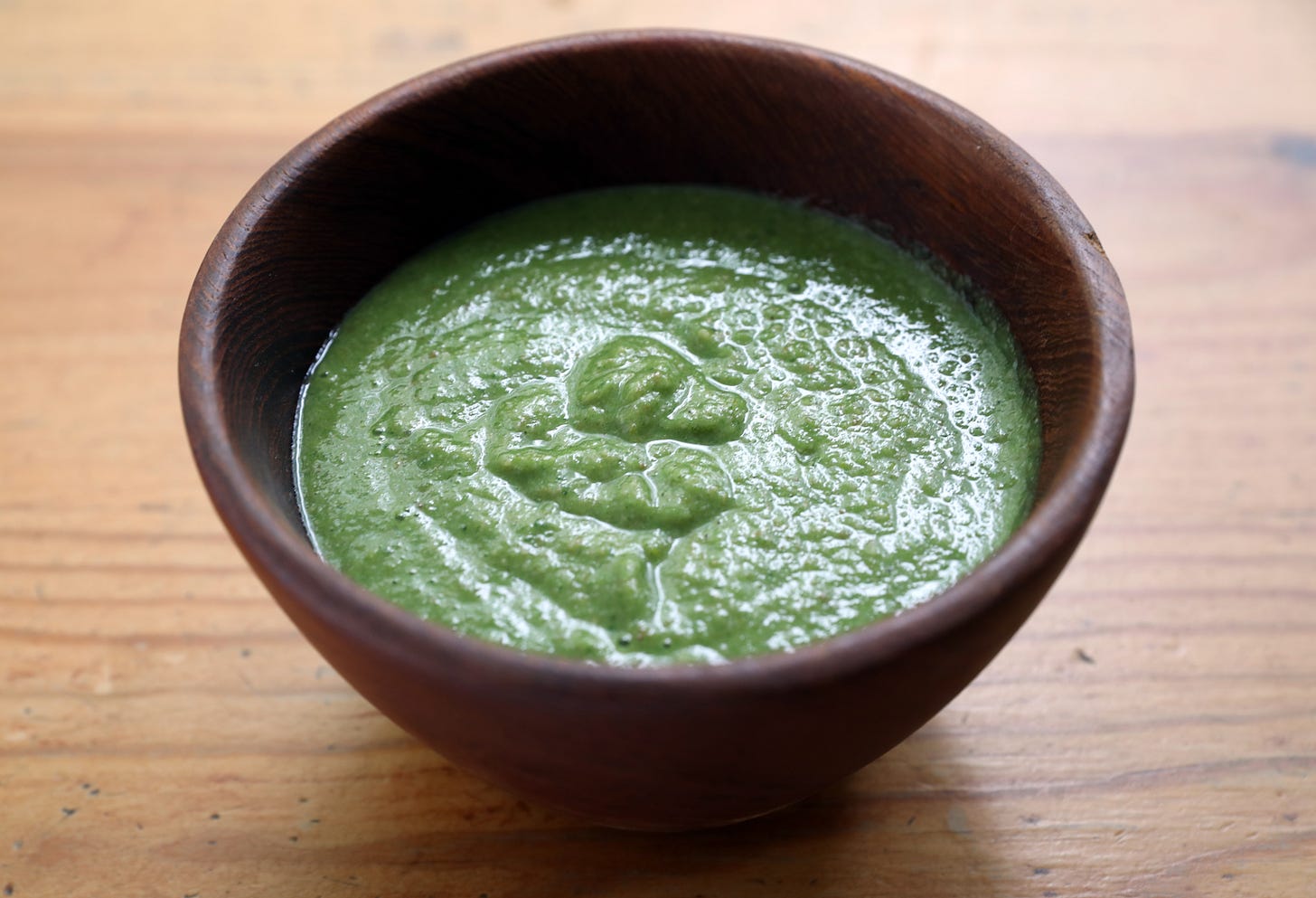As I toil in the content mines, hewing precious posts for your delectation, I’m posting another from last spring, before most of you subscribed. And it’s free, which is usually not the case for posts with detailed recipes. Purslane generally appears in these parts right around the summer solstice, and it is right on time this year. I spotted some in the garden the other day, so I’m reposting this extremely healthy and summery soup. You can see how I used it the next day as a sort of salsa verde here, and then once more as a marvelously enriching secret ingredent here. Enjoy!
There’s a spot right outside the house where I’ve been moving some dirt around to even out the grading near a fence. Happily, the exposed dirt sprouted a huge cluster of purslane so I—ever the fan of free wild food—have been mowing around it and letting it grow. Because of its assertiveness, drought-tolerance, and nutritional profile, purslane is an excellent illustration of the principle that what constitutes a weed is in the eye of the beholder. Depending on where you live, you might want to consider growing it on purpose as a multi-use plant: ornamental, ground cover, and food.
Purslane (Portulaca oleracea) is a particularly nutrient-dense plant, positively brimming with vitamins, minerals, omega-3 fatty acids (it’s the best leafy green source for these), and antioxidants. It’s got a slightly tart green flavor and works well as a raw or cooked vegetable. Because it’s a juicy succulent, it’s a great choice for getting a head start on gazpacho season while you wait for your tomatoes and peppers to ripen.
Gazpacho—apart from its excellent value as a cooling and nutritious summer soup—uses stale bread for body (like the pappa al pomodoro I wrote about recently). If you use a proper whole-grain sourdough, you’re also getting a ton of flavor, and that sour-savory-toasty profile meshes with the brighter, greener vegetal flavors of purslane in wonderful ways.
The only real trick to gazpacho is to chop and toss your vegetables in a little salt, then arrange them in a bowl on top of your bread (cut into cubes or chunks) so the liquid that the salt releases drips down and soaks into the bread, making for easier blending. The ratio of bread to veg will determine how sturdy the result is, as will your decision to pass the finished soup through a sieve or not. Sieves make for a velvety smooth soup, but you may not want to bother and instead enjoy the coarse bready bits as you slurp.
You can obviously use any color peppers and tomatoes that you like, but by keeping them yellow I preserved the purslane’s vivid green.
Purslane Gazpacho
Chop the following and toss them in a bowl with a fat pinch of salt:
1 yellow tomato
1 cucumber, seeded
1 yellow bell pepper
1 small onion
1 hot green chile
3 garlic cloves
Purslane, about as much in volume as all the other veg combined
A handful of fresh herbs: oregano, thyme, parsley, tarragon, basil, chervil, chives—alone or in combination
Pour this mixture into a large bowl in which you have put cubes of bread equaling about half the total veg volume and let it sit for at least 20 minutes so the liquid can soak into the bread.
Add a generous glug of sherry or wine vinegar, and a similar amount of olive oil, then blend smooth, adding a little water if it’s too stubborn. Strain if you want to, then adjust the seasoning and chill it for at least an hour before serving for best effect. Drizzle a little more oil on top if you want. Apart from its delightful tangy, verdant flavor, the bread makes this substantial—a lunch by itself, or a great start to a larger meal.







I love this.
Thanks for this recipe. I’m going to scout around in my yard and try this out. 🍃